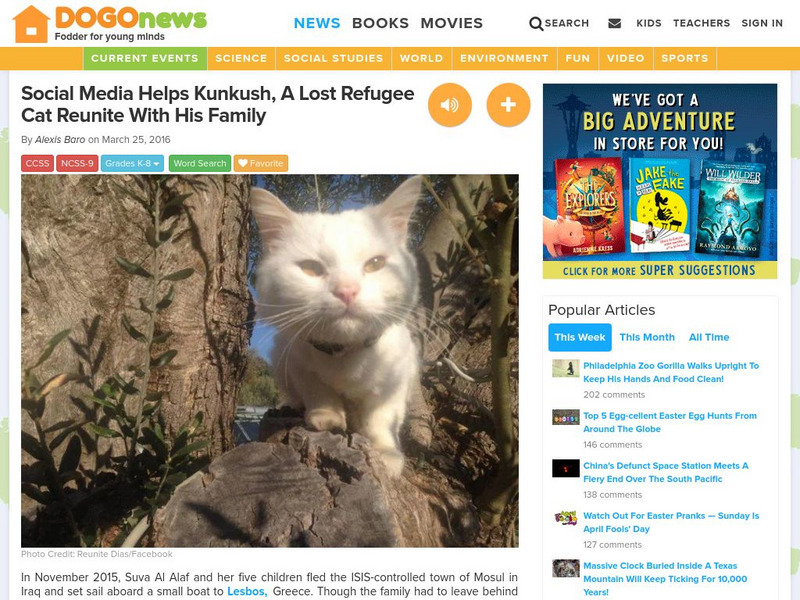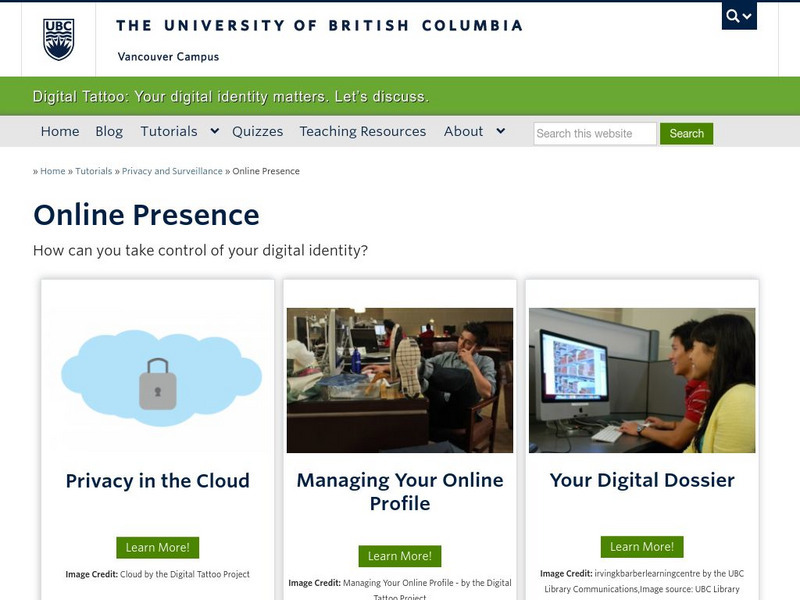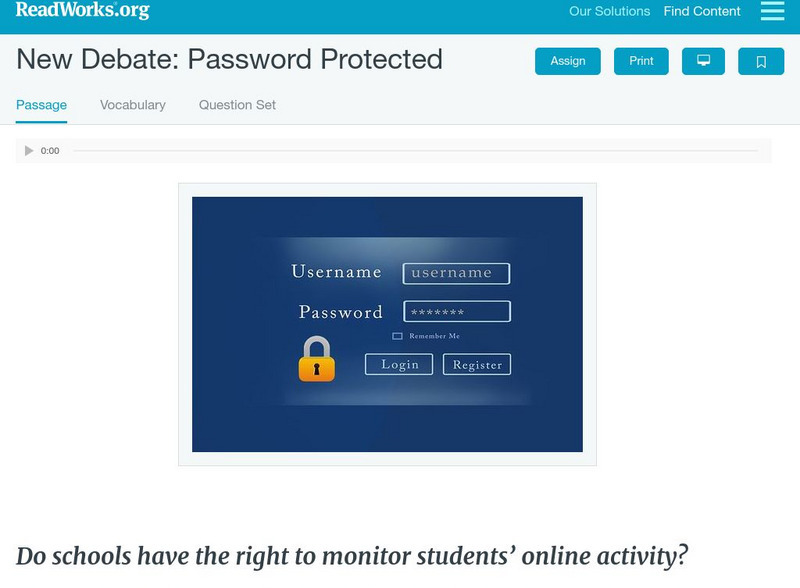Other
Sparticl
Sparticl is a new web and mobile service for teens, a collection of the very best the web has to offer in science, technology, engineering, and math or STEM. Sparticl includes answers to science questions, images, videos, games, and...
TeachEngineering
Teach Engineering: Making the Connection
Graph theory is a visual way to represent relationships between objects. One of the simplest uses of graph theory is a family tree that shows how different people are related. Another application is social networks like Facebook, where a...
DOGO Media
Dogo News: Social Media Helps Refugee Cat Reunite With Family
Read the amazing story of Kunush, a lost refugee cat who was reunited with his family with the help of kind people and social media. Includes video.
Other
Fanschool: Blogs for Teachers and Students
Fanschool provides a safe and simple blogging platform for students in both elementary and middle schools. Teachers have administrative control over all student blogs and accounts, and blogs are only viewable by classmates and the...
Goodwill
Gcf Global: Beyond Email
Learn about the various ways beyond email of communicating and sharing online.
American Psychological Association
American Psychological Association: Social Media's Growing Impact on Our Lives
Media psychology researchers are beginning to tease apart the ways in which time spent on social media is, and is not, impacting our day-to-day lives and our psychological well-being. They are looking at whether time spent on social...
REMC Association of Michigan
Remc Association of Michigan: 21 Things4 Students: 14. Social Networking
A social network is an online community of people who use a website or app to communicate with each other by sharing comments, images, videos, resources, etc. This tutorial consists of four quests and, when you have completed it, you...
Common Sense Media
Common Sense Media: Education: Social Media and Digital Footprints: Our Responsibilities
Social media can be a place to connect, learn, and, most of all, share. But how much do kids know about what they're sharing - and not just about themselves but each other? Help students think critically about their digital footprints on...
Common Sense Media
Common Sense Media: Education: Trillion Dollar Footprint [Pdf]
Students learn that they have a digital footprint, which can be searched, shared, and seen by a large, invisible audience. Students then learn that they can take some control over their digital footprint based on what they post online....
University of British Columbia
University of Bc: Digital Tatoo: Privacy and Surveillance: Online Presence
How can you take control of your digital identity? Learn about privacy in the cloud, managing your online profile, and digital dossiers. Resources include videos, quizzes, and ideas to discuss and explore.
Other
Childnet International: Digizen: Social Networking Detective
This social networking profile has been created to stimulate discussion about safe and potentially unsafe practices and features on social networking sites. Together with the accompanying questions, it has been designed to highlight ways...
Other
Ryerson University: Digital Footprint: A Positive Digital Image [Pdf]
Leaving a positive digital footprint can help you stand out even in the most competitive circumstances. It may take some time and effort to build, maintain or repair a positive image; however, making informed choices and presenting a...
Media Smarts
Media Smarts: Promoting Ethical Behaviour Online: My Virtual Life Lesson
In this lesson, students learn about ways to manage their privacy and reputation online by exploring their digital presence and to make good choices about sharing other people's content online. Students explore how they are portrayed...
TED Talks
Ted: Ted Ed: Visualizing the World's Twitter Data
Good morning, Twitter! Millions of tweets are sent everyday, and from these tweets, we can gather a lot of information about people's lives: where they travel, when they wake up, and their opinions on pretty much everything. Jer Thorp...
Other
Childnet International: Digizen: Social Networking
Most students participate in social networking applications such as Facebook, MySpace, or Twitter. This site presents the benefits and risks of using social networking tools in education. The site also presents examples of successful...
Read Works
Read Works: News Debate Password Protected
[Free Registration/Login Required] An informational text debating whether or not schools have the right to monitor what students post online. A question sheet is available to help students build skills in reading comprehension.
Common Sense Media
Common Sense Media: Education: Lesson: Feeling on Display
Are girls and guys judged differently when they post photos online? Students explore the pressures many teen girls and boys face to keep up appearances online. PDF (requires Adobe Reader).
NBC
Nbc: Breaking News and Top Stories
A 24/7 news feed of the most current, real time news by editors monitoring social media.
CommonLit
Common Lit: "Anti Social Networks? We're Just as Cliquey Online" by Laura Sydell
A learning module that begins with "Anti-social Networks? We're Just as Cliquey Online" by Laura Sydell, accompanied by guided reading questions, assessment questions, and discussion questions. The text can be printed as a PDF or...
Goodwill
Gcf Global: Internet
A website with links to tutorials on various Internet Skills including Internet, Online Safety, Social Media, Email, and Google.
National Center for Missing & Exploited Children
Net Smartz Kids: The Boy Who Loved Im
Clicky tells the story of a boy who loves to IM his friends. What should he do when he receives a message from someone he doesn't know? [1:59]
Other
Cyberbullying Research Center
This site has links to other sites about cyberbullying. Cyberbullying is when E-mail, Instant Messaging (IM), Chatrooms, Bash Boards, Small Text-Messages (SMS), Web Sites, and Voting Booths are used to spread rumors, negative images,...
CommonLit
Common Lit: Themes: Community: How Are Communities Formed?
This is a collection of Grade-Leveled texts (3-12) to address the question, "Community, How are communities formed? Select a grade level and a collection of on grade-level reading passages on the topic comes up. [Free account...
CommonLit
Common Lit: "Online Identity" by Common Lit Staff
The Internet has heavily shaped our notion of identity. On the Internet, people can create a multitude of personas, some of which can be created with false information. As you read, take notes on the ways in which people express their...








